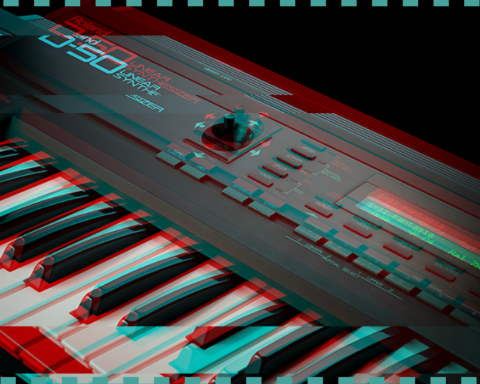“Mystery of Love”—Larry Heard’s 1985 entré into house music—is seven minutes of languid bassline heaven. Anchored by the simplicity of a seven-note arpeggiating bassline, Heard’s sonic paintbrush sways gracefully with wavy chords and the rhythmic sensibility of a drummer. Often credited as the first deep house cut, it’s still a blueprint for the genre. Its undulating pattern continues to capture dancefloors. And to think, Heard didn’t even know he was making house music.
Following Bliss
Before he was Mr. Fingers, Heard’s family shaped his musical DNA. There was a piano in the house and everyone played. “I came up thinking that every adult could play. Music was a centralized thing that the family hovered around. My whole tie to music springs out of ‘family,'” he told NPR in 2016.
While his brothers picked up the guitar, he gravitated towards the drums. He learned by playing along to the records in his father’s vast collection. But when he graduated high school, he got a job to help support the family. He spent his days as a benefits authorizer for the Social Security Administration and nights following his bliss as a drummer.
"In one night Heard wrote “Mystery of Love” and “Washing Machine,” two of house music’s most enduring anthems."
Crafting Instant Classics
By 1985 Herad was ready to step out from behind the drum kit. He felt frustrated that his bandmates refused to hear his ideas. Anxious to write his own music, he quit the band he was in at the time and purchased a Roland JUPITER-6 synth and TR-707 drum machine. Incredibly, the night he brought them home, he wrote “Mystery of Love” and “Washing Machine,” two of house music’s most enduring anthems.
“I didn’t know anything about house music, it just turned out to be a house track,” he told the Chicago Tribune in 1991. House was beginning to blossom in the Chicago underground. But Heard came up playing at live music clubs and he had no reference point for dance music. So, it was remarkable that he managed to pull those ideas from the ether.

The Chicago Scene and Getting Noticed
Oddly enough, he did have a relationship with the emerging cultural movement. The Warehouse—home to DJ Frankie Knuckles and the birthplace of house music—was only a few blocks from his day job. He walked by the venue on occasion. But this was inner-city Chicago in the ’80s. Those crowds could be anything, so Heard minded his business.
After he wrote “Mystery of Love” Heard tried in earnest to get his tunes signed. After coming up short, he got it pressed on his own and gave acetate copies to Knuckles and Ron Hardy to play at the clubs. Both DJs tried to take credit for writing the song after it started to pop off in their sets. By 1986 the song gained enough steam for an official release on D.J. International Records. They repackaged it with a faster club-friendly version and vocals from Fingers, Inc cohorts Robert Owens and Ron Wilson.
"The track is a slow chugging serenade emanating from the JUPITER’s warm sonics and the thumping digital whomp of the TR-707."
A Legacy of Mystery
However, all these years later, the original still reigns supreme as a testament to happy accidents. The track is a slow chugging serenade emanating from the JUPITER’s warm sonics and the thumping digital whomp of the TR-707. Kanye West even sampled the bassline on his hit “Fade.” The immortal nature of “Mystery of Love” led Heard to compare the song to a cat. As he told Billboard in 2016, “You think it’s gone, and here it comes walking through the doggy door again.”







